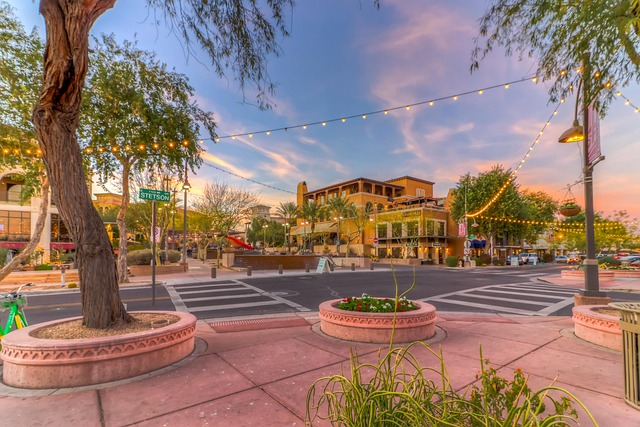Luxury retail destinations, developed in partnership with high-end brands, have become key drivers of urban real estate globally. These meticulously crafted shopping experiences blend architectural elegance and exclusive services, attracting international consumers and revitalizing city spaces. As vibrant cultural hubs, they elevate property values, boost local economies, and create desirable neighborhoods for affluent residents and tourists alike, making them significant factors in the real estate landscape.
Discover how luxury shopping and dining elevate entire neighborhoods and drive real estate markets. From bustling shopping districts to gourmet hotspots, these destinations attract folks seeking indelible experiences. Explore the symbiotic relationship between high-end retail, renowned restaurants, and property values through a global lens. Uncover design strategies for creating integrated spaces that foster vibrant communities, as we delve into the convergence of luxury, dining, and real estate development.
Luxury Retail Destinations: A Real Estate Perspective

Luxury retail destinations have become a significant aspect of urban real estate, attracting high-end shoppers from around the globe. These areas are meticulously designed to offer an unparalleled shopping experience, blending exquisite architecture with top-tier brands. The location, ambiance, and accessibility play pivotal roles in their success, as they contribute to a unique brand identity that sets them apart from traditional retail spaces.
Real Estate developers often collaborate closely with luxury brands to create destinations that not only cater to the affluent but also enhance the local economy. These projects involve strategic planning, incorporating features like exclusive access, personalized services, and limited availability to elevate the overall customer experience. As a result, these luxury shopping hubs become iconic landmarks, fostering economic growth and transforming urban landscapes.
– Exploring the appeal of luxury shopping districts

Luxury shopping districts have become a magnet for high-end enthusiasts, offering an unparalleled experience in terms of real estate and lifestyle. These vibrant areas are meticulously designed to cater to the sophisticated tastes of affluent shoppers, featuring architectural marvels that house exclusive brands and designer boutiques. The appeal lies not only in the exquisite products on offer but also in the ambiance—a harmonious blend of opulence and elegance that invites visitors to indulge in a sensory journey.
These shopping meccas often become cultural hubs, attracting folks from all walks of life who appreciate fine craftsmanship and luxury. The real estate value of such locations is immense, with prime retail spaces commanding premium prices due to their exclusivity and footfall. This trend has sparked a global phenomenon, with cities vying for the title of having the most coveted luxury shopping districts, each offering its unique blend of fashion, cuisine, and cultural experiences.
– How property values are influenced by high-end retail

In the realm of real estate, the presence of high-end retail establishments can significantly impact property values in a given area. When renowned for luxury shopping, neighborhoods often attract affluent residents and tourists alike, stimulating local economies and increasing demand for premium real estate. Properties near high-end retail destinations tend to appreciate in value due to enhanced desirability and exclusivity.
This dynamic is particularly evident in urban areas where luxury brands and boutique stores converge with upscale dining options. The hustle and bustle of vibrant shopping districts attracts folks from all walks of life, fostering a sense of community and elevating the overall livability of the region. Consequently, property owners benefit from higher rental yields and the potential for substantial capital gains over time.






